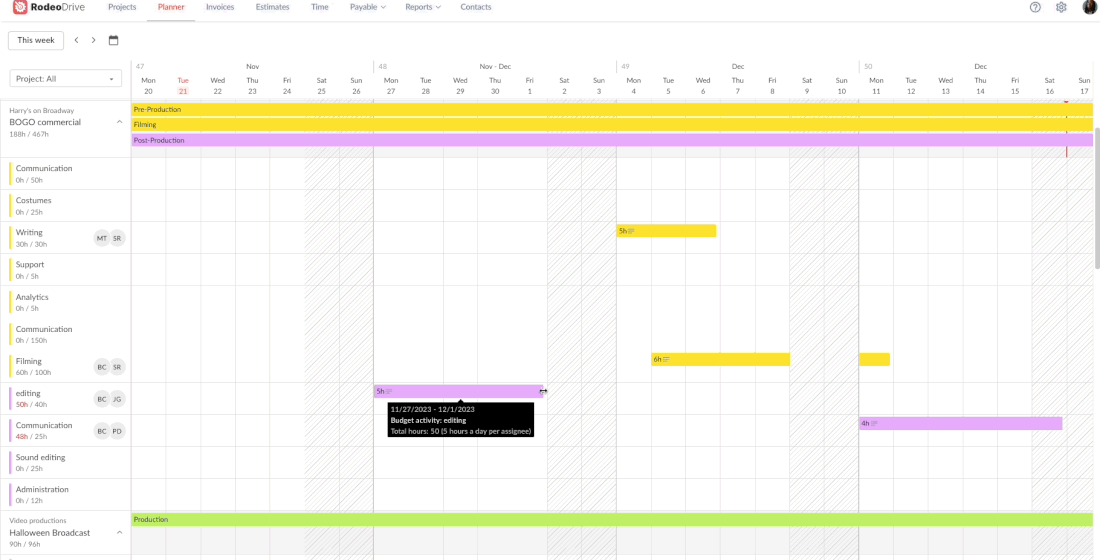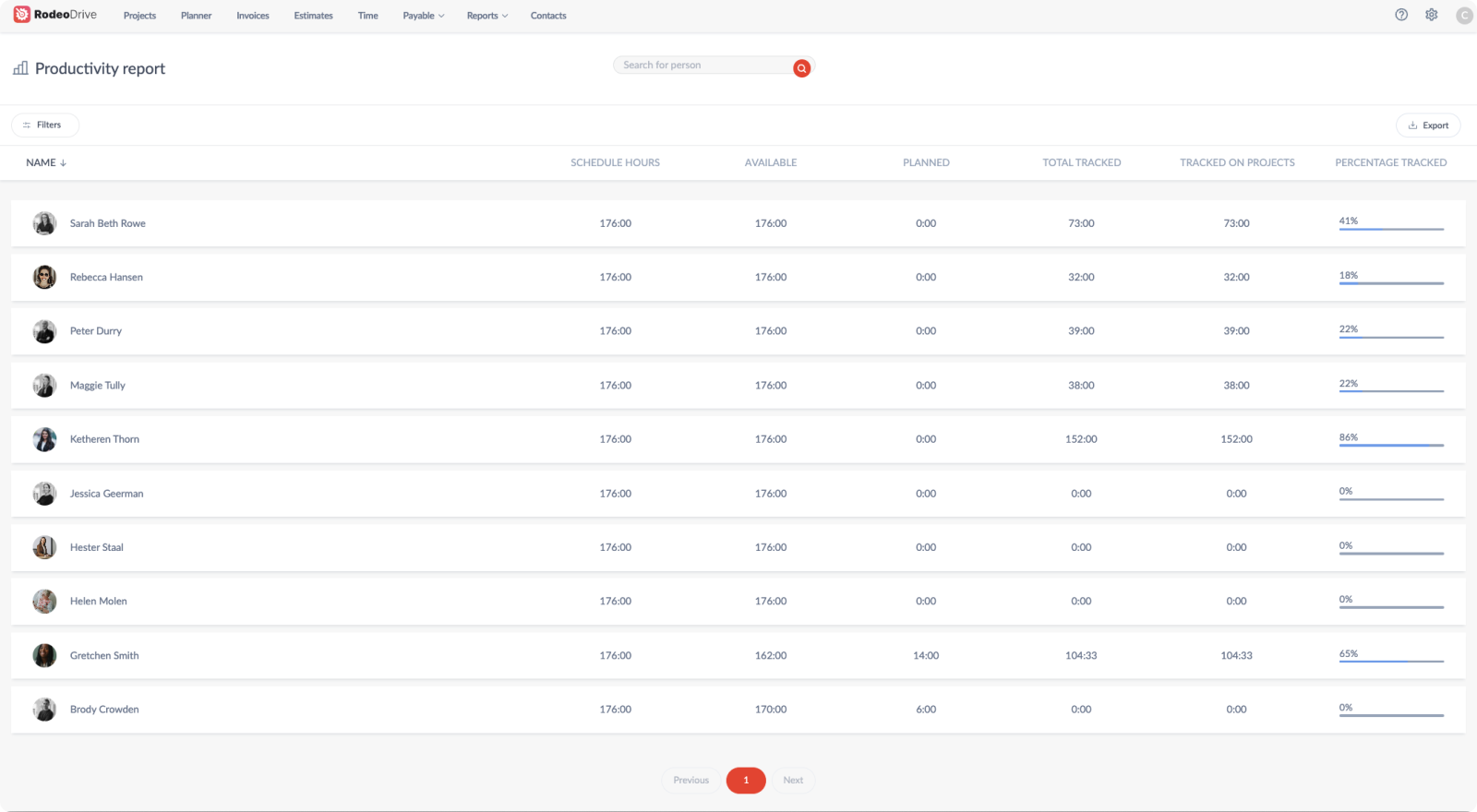How to Improve Team Performance by Boosting Team Morale
Team morale is a buzzword that company leaders often throw around. But what does it actually mean?
Well, in simple terms, team morale is the collective emotional state of a team, reflecting employees’ overall satisfaction, motivation, and cohesion, which directly influences their productivity and job satisfaction.
There are several benefits of creating a team with high levels of employee morale, and several consequences that can occur when team morale isn’t made a priority. In this blog, we’ll explore both, and explain a dozen tips you can implement to boost morale — improving team performance in the process.
What is team morale?
Team morale refers to the collective mood, motivation, and enthusiasm a team has in their workplace. If a team is enthusiastic about building a strong company culture and feels a sense of optimism and excitement for the future, then employee morale is high.
Team morale also refers to the way that employees view their organization, including whether they have confidence in the company’s ability to be successful. If employees feel discontent about company culture or their role, then they won’t be enthusiastic about coming to work every day, causing low morale among the team.
Low employee morale has several negative consequences for teams, such as difficulty completing high-quality work on time, thus causing delays to project timelines. High employee morale, on the other hand, is typically associated with better work outputs.
Why is team morale important?
Low team morale can have significant negative consequences for your team. Typically, poor employee morale results in high rates of turnover and hurts your team’s ability to produce high-quality deliverables on time.
If you’re looking to keep your team’s performance high, then team morale is worth investing in. When people are enthusiastic about their company and the work they’re doing, everyone benefits. Let’s explore a few other benefits of strong team morale.
Improves team productivity
Strong team morale cultivates a positive work environment where team members are satisfied with their jobs and emotionally invested in their tasks and the success of their coworkers. High team morale is more likely to produce successful collaboration and communication, which leads to improved team synergy and outputs.
When you know that your team is relying on you for success, it creates a sense of team accountability that encourages people to put their best work forward in everything they’re assigned, improving team productivity in the process.
Related: How to Improve Workplace Efficiency: 10 Proven Strategies That Work
Encourages team retention
High team retention presents enormous benefits for companies. Not only are there reduced recruitment and training costs as a result of employees sticking around, but it’s good for business.
Particularly in organizations with client-facing teams, having the same group of people cater to a client over the course of several different projects is great for relationship building and ensuring the client is satisfied over the long term.
When team morale is high, employees are satisfied with their jobs and have fewer reasons to look for other opportunities, thus boosting retention.
Facilitates better team collaboration and communication
Creating an environment where everyone feels motivated and confident in their team’s ability to be successful is extremely important. Fortunately, a common byproduct of doing so is greater team collaboration and communication.
.png)
Team building is a helpful strategy to boost employee morale since it reassures everyone that they’re supported by the entire team. This makes team members feel as though they can rely on one another when they need a little extra help.
Helps develop a strong company culture
It’s difficult to build a strong company culture when employees don’t feel confident or enthusiastic about their role within the company. Instead, when team morale is high, it’s easier for shared company values and beliefs to fall into place.
That said, you might be wondering why you should care about establishing a strong company culture in the first place. Well, reports show that 76% of employees feel that workplace culture has an impact on their productivity and efficiency.
More cost-effective
A project team that’s plagued with burnout is likely to feel the effects of it in several ways. For instance, you might notice overextended team members taking more sick days or not giving their work their all, making it take them longer to complete basic tasks.
Instead, project managers will find that an organization with high team morale will be more productive, which can make projects more cost-efficient. Plus, we already mentioned how high turnover can be extremely expensive for businesses when they have to find and retrain new talent so often.
Factors that can harm your team’s morale
Your employee morale will likely fluctuate depending on what’s currently on the team’s plate and what the organization is going through.
But because team morale is so dependent on current circumstances, it’s a good idea to be aware of factors that can cause low employee morale so that you can actively prevent it. Let’s take a look at a handful of common causes.
Poor work-life balance
A poor work-life balance is one of the main factors that can hurt your team morale. When work begins to take over your personal time, it can quickly lead to burnout, stress, and exhaustion.
And when you begin spending more time on work than on your own personal life and well-being, decreased employee satisfaction is usually the main outcome.
As a project manager, you may be contributing to your team’s poor work-life balance in ways you don’t even realize. For example, scheduling meetings for early mornings before the workday has begun or late at night can encroach on their personal time. The same goes for setting the expectation that team members will work through their lunch breaks or on the weekend.

Frequent changes in leadership
Frequent changes to company leadership can indicate a lack of stability in your team. And because decisions surrounding strategy and your organization’s long-term vision often come from these leaders, team members may feel as though the direction of the company is in flux.
A strong company needs a strong leadership team that employees trust and feel confident in, and if your leadership team is more of a revolving door of new hires, it’ll be difficult for them to create a company vision that your team can rally behind.
Not to mention, constantly dealing with new company leadership means your team will have to constantly adapt to new management styles.
Excessive workload
Oftentimes, team vacancies can cause other team members to have to pick up extra work, resulting in too much work on one person’s plate at a time. Or, sometimes team members are asked to pick up work that’s not in their job description.
Forcing employees to juggle more responsibilities than they signed up for is a recipe for dissatisfaction. These extra responsibilities will quickly begin to erode the time they’re able to dedicate to their regular job duties and potentially disrupt the quality of their outputs.
Related: Strategies for an Improved Capacity Planning Process
Lacking opportunities for professional development
Personal growth is a great motivator to keep team members energized and engaged in the work they’re tasked with. Teams that lack clarity on opportunities for growth within the company are more likely to look for opportunities to leave, which will then diminish team morale — and subsequently, performance.
Professional development should be discussed openly among your team. Encouraging employees to attend trainings and other workshops that help them sharpen their management skills can boost team morale.
12 things you can do to improve your team morale and performance
By now, you already understand the benefits of boosting team morale and are aware of some of the factors that can harm your team’s performance.
But as a project manager, there are quite a few things you can do to boost team morale and encourage better performance. Let’s dive in.
1. Determine which management style works for your team
Your management style matters more than you might think when it comes to your team’s satisfaction with the company and their roles. An overly hands-off approach might leave your team struggling to understand the direction they’re supposed to be headed, while too much direction can leave them feeling micromanaged.
And while you probably won’t want to completely overhaul your management style based on your team, you’ll want to make adjustments that allow them to do their best work. Asking for feedback is a great way to ensure that you’ve adopted an approach that’s properly suited for your team.
2. Create opportunities for team building
Building team bonds is an important part of creating an environment with strong team morale. The benefits of strong team bonds include improved creativity, higher levels of trust, and reduced likelihood of conflict. Setting up team-building activities is a great way to do just that.
You may also do this by encouraging team members to set up coffee meets with one another to get to know each other in a less formal setting. Integrating team-building icebreaker questions into your routine meetings is another strategy.
3. Implement a motivational goal-setting framework
Setting goals for your team to work toward is essential in keeping team morale high. With goals on the horizon, your team has something to aspire to and there are milestones to celebrate along the way.

The goal-setting framework you decide to implement might be dependent on your organizational goals. For example, OKRs or stretch goals might be a fit for teams that are looking to strive for outcomes that are beyond expectations, whereas KPIs are useful for setting benchmarks and tracking performance data.
SMART goals are another framework to consider, as these goals are Specific, Measurable, Attainable, Realistic, and Time-bound. This means SMART goals are typically more actionable and within reach than other more ambitious frameworks.
But regardless of the goal-setting framework you select, it’s just important to have one in place. Without goals, it’s less clear to team members what they should be working toward and what progress you expect them to make.
4. Encourage employee-led initiatives
Employees want to feel heard, and celebrating and encouraging employee-led initiatives is a great way to ensure that they do.
Employee initiatives can run the gamut from monthly happy hours to health and well-being events. Essentially, they include anything that’s started by company leadership rather than management.
By supporting these initiatives with an investment, or even simply attending employee-run events, you can show employees that you care about them and their happiness in the workplace.
5. Recognize your team’s achievements
If a team member is going above and beyond to make a project a success, it’s important to recognize that! Otherwise, they may stop giving their work their all if they don’t feel appreciated.
This doesn’t just include recognizing large achievements, but small ones as well. If a team member rearranged their schedule to accommodate a last-minute client meeting or exercised a great amount of patience when their work was undergoing a lengthy edit process, it’s a nice gesture to simply thank them.

6. Schedule 1:1 check-in meetings with your team
Every team has a different cadence of project management meetings that works best for them. But, even if you already have a meeting schedule in place, you might want to consider implementing 1:1 meetings as a way to touch base with each team member in a more personal setting.
This way, they can share their feelings freely while feeling heard by a team leader. Individual meetings like this are also a great place to discuss progress toward team-wide and individual goals, as well as professional development.
7. Provide opportunities for professional growth
One of the best ways to encourage team members to stay motivated is by discussing their professional growth, as well as the steps necessary to take the next step within the organization.
If possible, tying an individual’s daily tasks to their career advancement goals is a great way to help them find purpose and drive in their day-to-day work. This also sends the signal that as a leader, you care about their growth, and your organization is looking to promote from within rather than hire externally for higher-level roles.
Related: Which Project Management Team Roles Are Key for Success?
8. Make your team members feel heard
As a project manager, your job requires a high degree of decision-making. However, your team members may have fewer opportunities to make decisions impacting the project.
A great way to make team members feel heard and their opinions respected is by involving them in the decision-making process, when possible. It might be as simple as showing them several different options for a deliverable and asking them what their thoughts are or what they like best.
Team morale is often highest when everyone feels like they’re a valued member of the team, so you’ll want to make an effort to make them feel heard.
9. Offer flexibility and autonomy whenever possible
Rigid and restrictive work environments aren’t always super conducive to high employee morale. Instead, many employees work best when they’re able to structure their workday on their own terms.
Implementing a hybrid work model is a great way to offer employees a higher degree of flexibility, for example. This way, they’ll still be in the office working with coworkers several times per week, but they still have the ability to structure their workdays as they see fit while at home.
After all, everyone has different work styles, and some people are more productive in the office, whereas others do better with fewer distractions. Practicing flexibility allows you to accommodate everyone.
Another example might be giving employees a bit more freedom when it comes to their working hours. For instance, employees with children may have drop-off or pick-up duties to tend to, and offering more flexibility with regard to when they’re on call might be an appreciated gesture.
10. Lead by example
Think of all the attributes you want your employees to have. Perhaps that includes being receptive to feedback, taking the initiative to lend a helping hand, or taking accountability when your performance falls short.
Regardless of which attributes come to mind, you’ll want to do all that you can to showcase these same qualities when leading the team. The example you set forth as a team leader is extremely important in setting expectations for those who report to you.
The same goes for work-life balance as well. We’ve already touched on the ways that poor work-life balance can negatively impact employee morale, and you can set your team on the right path by being a model for what a good work-life balance looks like in practice.
11. Set clear expectations
As a team leader, you probably already understand the importance of good communication. One of the best ways to prevent miscommunications from occurring is by setting clear expectations for your team ahead of time.
Your team members may experience heightened pressure in their roles if it's unclear what you expect in terms of working hours, responsibilities, and deadlines. Being clear about what you need from them allows them to perform at the highest level possible.
12. Ensure that all feedback is constructive
Giving and receiving feedback is important for any team. However, feedback can become unproductive if it isn’t constructive. And if your employees are already struggling with low team morale, this type of feedback can make everyone unhappy.
Instead, check that your feedback is constructive before relaying it to the team. If the feedback is more negative, then try to include steps or action items that the team can take to improve their performance going forward.
Prevent employee burnout with Rodeo Drive
The best way to monitor your team’s performance is with the help of a project management tool, such as Rodeo Drive.
Rodeo Drive is a comprehensive software solution that brings together several features project managers need to see their projects through from start to finish, including budgeting, time tracking, activity planning, invoicing, and reporting.
Implementing a tool like this can also help identify when your team performance is slipping and you need to pay a little more attention to team morale. Check out these Rodeo Drive features that can help:
Check on your team’s workload before assigning new activities
Thanks to Rodeo Drive’s activity planner, you can check what’s on your team’s plate before assigning additional project activities. The platform’s planner tool helps you visualize what everyone’s working on simultaneously, rather than having to manually ask everyone.

Many project managers find this feature extremely useful for preventing burnout and helping team members maintain a healthy work-life balance.
Plus, we know that plans don’t always unfold as you expect. If something needs to be rescheduled, simple drag and drop your project activity to a new day. It’s as simple as that.

Monitor employee productivity with Rodeo Drive’s reports feature
When overseeing a large team working on several projects at once, you need a centralized place to examine your team’s productivity. This is why Rodeo Drive offers a variety of automatically generated reports based on your team’s usage of the platform, including an employee productivity report.

The team productivity report is just one of several reports you’ll find in your “Reports” tab. These reports can be filtered by project manager, date, or client to help you find what you’re looking for. Additionally, you can export all of this data as an Excel or CSV file, should you want to create your own reports outside of the platform.
And that’s just an overview of two of the features that can help keep team morale high. Experience all that Rodeo Drive has to offer and sign up for free today.









